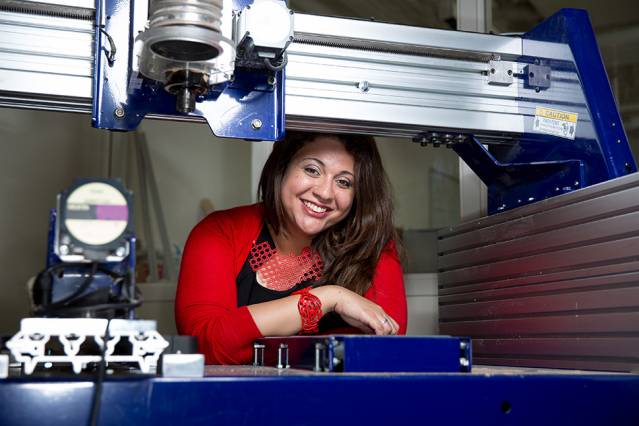
It was another testy day in the post-revolution Cairo of 2012, with protestors and police crowding streets that threatened to erupt into violence.
Although she was nearly 5,500 miles away in Cambridge, Mass., MIT graduate student Dina El-Zanfaly was worried. She was thinking of the fab lab she helped found in Cairo — a community-based maker space where anyone can come in, learn to make anything using the lab’s machinery and tools, and work on any project they want. The lab wasn’t only a physical space for Egyptian makers; it was a grassroots movement — just like the Egyptian revolution — to create a community of makers in Egypt from scratch. So, like any concerned parent, El-Zanfaly called the lab’s director to make sure everything was all right.
“What are you talking about?” he asked. “This is one of the busiest days in the lab!”
Indeed, the fab lab in Cairo is a testament to the tenacity of makers working on their ideas, no matter the surroundings. “During the past several years the lab has served as a hub for young people who are just making things,” El-Zanfaly says. “Sometimes we’ve had to close for a couple days due to instability. But in general it’s very active, even during the unrest.”
The idea for Fab Lab Egypt was sparked in 2010, during the second year of El-Zanfaly’s Fulbright-funded master’s program in the Design and Computation Group at MIT, where she is now a PhD student. El-Zanfaly had just taken Neil Gershenfeld’s class on rapid prototyping, MAS.863 (How to Make (Almost) Anything). “That class changed my whole life,” El-Zanfaly says. “Every week you learn a new skill and you use another machine.”
El-Zanfaly realized the value of her new skill set, but also wished she and other design-minded young people in her home country could have access to laser cutters, 3-D printers, and CNC (computer numeric control) mills. So after the class was finished, she approached Gershenfeld and asked him, “Why don’t we have this in Egypt?”
El-Zanfaly got to work, and by early 2012, with help and funding from several aspiring Egyptians, Fab Lab Egypt became the first fabrication lab in the Middle East. Since then, El-Zanfaly has helped create additional labs in two science, technology, engineering, and mathematics (STEM) high schools funded by the United States Agency for International Development (USAID): one all-girls school and one all-boys school. She’s also working to develop another lab in a third STEM school.
Read more at ENGINEERING.com

